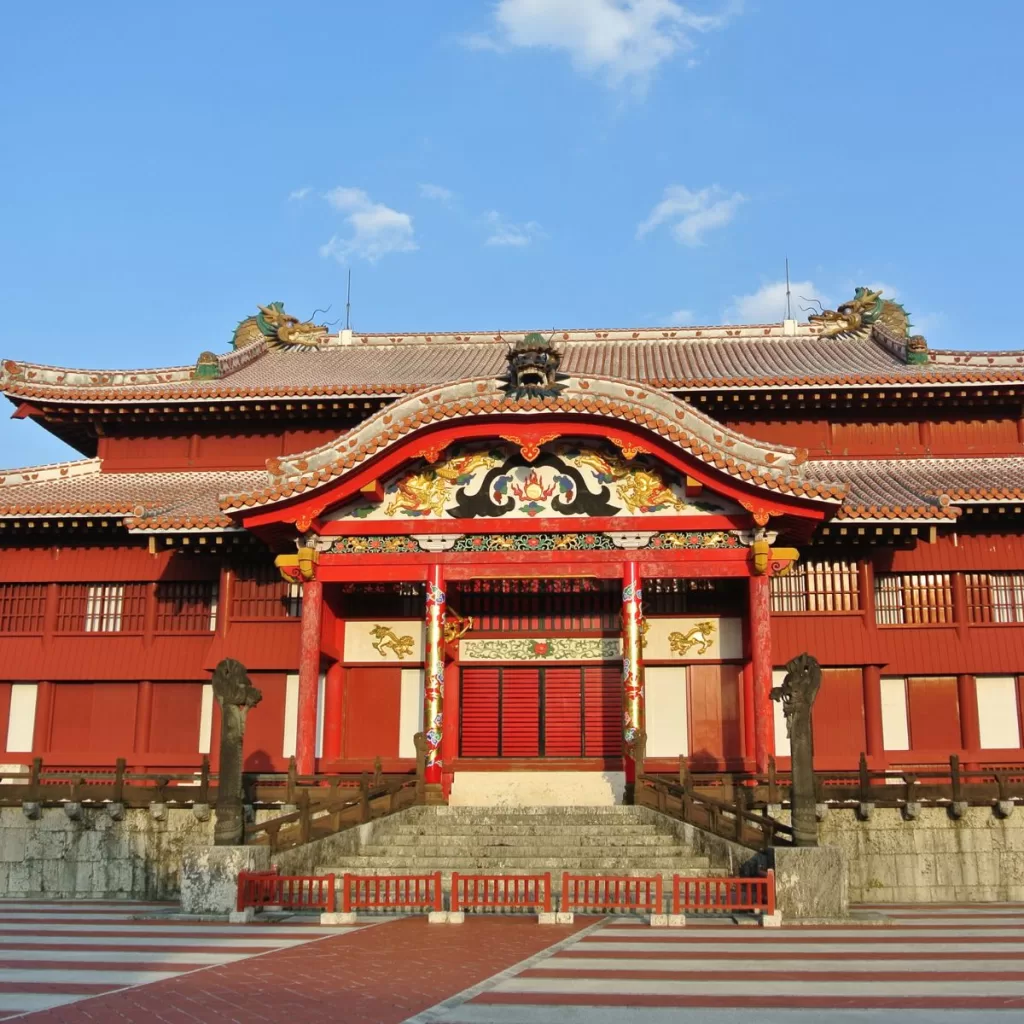Shuri Castle: The Heart of the Ryukyu Kingdom
Perched atop a hill overlooking the city of Naha, the imposing Shuri Castle served as the political, cultural and economic center of the Ryukyu Kingdom for over 400 years. Though the castle has been repeatedly destroyed and rebuilt over its long history, it remains a powerful symbol of Okinawa’s past.
Shuri Castle Early History
Shuri Castle’s origins stretch back to the 14th century Sanzan period, when it was likely first built. After King Shō Hashi unified Okinawa in 1429 and established the Ryukyu Kingdom, Shuri became his royal residence. For the next 450 years, the castle stood as the heartbeat of the Ryukyu Kingdom. As the royal court and administrative hub, Shuri Castle hosted major political events, ceremonies and affairs of state. It also facilitated lucrative trade with China, Japan, Korea and Southeast Asia.
The castle consisted of multiple compounds, including the central administrative area and residences for the royal family and high-ranking officials. Its distinctive vermilion walls and gates exemplified a blend of Chinese and native Ryukyuan architectural styles.
Destruction and Decline
Despite its importance, Shuri Castle endured several destructive fires over the centuries. The castle was burned down in 1453, 1660 and 1709, before being rebuilt each time. In 1609, Japanese samurai forces from the Satsuma domain briefly seized Shuri Castle. Though they later withdrew, this marked the beginning of Satsuma’s domination over the Ryukyus.
By the 1850s, Shuri Castle had declined from its former glory. When American Commodore Matthew C. Perry forced his way into the castle, he was denied audiences with the king, showing the reduced political sway of the Ryukyus. In 1879, Japan annexed the Ryukyu Kingdom, deposing the last king Sho Tai. Shuri Castle was subsequently used as a barracks by the Imperial Japanese Army.
World War II Devastation
The most catastrophic destruction came during World War II’s Battle of Okinawa in 1945. The Japanese army set up its heavily fortified headquarters in tunnels beneath Shuri Castle. For almost two months, the Americans assaulted the Japanese defenses centered around Shuri. From April 1st to May 27th, fighting raged across southern Okinawa.
On May 25th, the battleship USS Mississippi shelled Shuri Castle for three days trying to dislodge the Japanese. The bombardment left the castle battered and burning. On May 27th, the Japanese abandoned Shuri under cover of night as the Americans seized the castle. The fierce fighting had utterly devastated the once-magnificent castle.
Post War Years
After the war, Shuri Castle became part of the University of the Ryukyus campus from 1950-1975. In the postwar years, only a few castle remnants like stone walls and foundations still stood amidst the ruins. Starting in 1958, reconstruction efforts began with Shureimon Gate.
On the 20th anniversary of Okinawa’s return to Japan in 1992, the castle’s main buildings and walls were rebuilt. This restoration aimed to recreate the castle’s role as a cultural and administrative center, rather than its military history. Architects used a blend of original and modern materials in the rebuild. By 2000, Shuri Castle was designated a UNESCO World Heritage site as part of the Gusuku Sites and Related Properties of the Ryukyu Kingdom.
2019 Fire Tragedy
Disaster struck again on October 31, 2019, when a devastating fire broke out around 2:30am. The blaze quickly consumed the newly reconstructed main hall, Seiden, and adjacent buildings. By 1:30pm, the fire had razed 4,200 square meters including the iconic Seiden, Hokuden and Nanden.
Luckily, no one was injured in the fire. Authorities later determined the likely cause to be an electrical fault. The 2019 tragedy marked the 5th destruction of the ill-fated castle. Okinawa’s governor vowed to rebuild the cherished cultural symbol once more.

The Phoenix Will Rise Again
For over 600 years, Shuri Castle has been repeatedly destroyed yet resolutely rebuilt each time – affirming its immense significance for Okinawa. Beyond just a landmark, the castle represents the heart and soul of Ryukyuan cultural identity. It is the physical embodiment of Okinawa’s glorious past and enduring spirit.
Though tragedy has struck countless times, Shuri Castle’s legacy remains undimmed. In the aftermath of the 2019 fire, over $3 million was crowd-funded to aid reconstruction within just one week. Work is already underway to meticulously restore the demolished sections. The phoenix castle of Shuri will rise majestically again by 2026, reclaiming its rightful place overlooking Naha.
Just as it has for centuries, Shuri Castle will continue to represent the cultural resilience of the Ryukyuan people in the face of hardship. Natural disasters and wars have repeatedly tested the bonds between Okinawa’s past, present and future – but the flames reforged these bonds to be ever stronger.
After exploring the majestic Shuri Castle in Okinawa, continue your Japanese castle tour by visiting the equally impressive Osaka Castle.